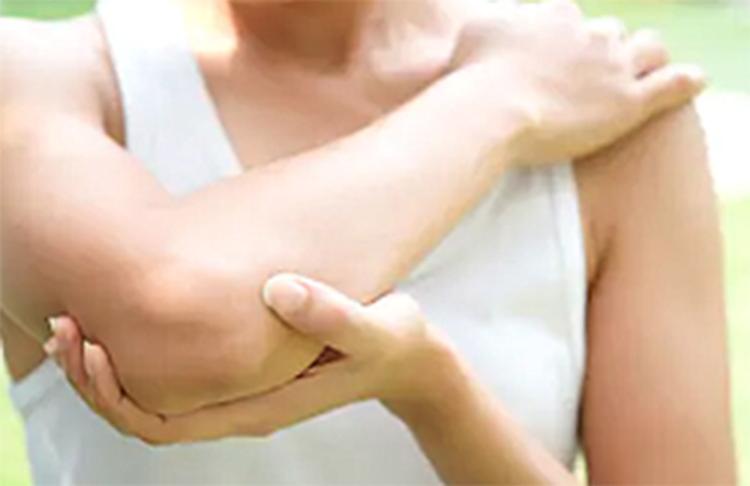In the late spring/early summer, I can usually count on an influx of patients who come to physical therapy because of elbow pain that is affecting their golf game.
Many times, they tell me the pain actually started a month or two before, right around this time of year. Whether it’s scrubbing floors, applying a fresh coat of paint, or getting their garden ready for the season, many spring cleaning tasks are especially hard on the elbow, forearm and wrist.
There are two main conditions that cause pain around the elbow.
Tennis elbow (lateral epicondylitis) is a condition in which pain is localized to the outside part of the elbow and often down the forearm. It is usually aggravated by activities which require a lot of heavy gripping, require lifting with the palm down, or require forceful twisting.
Golfer’s elbow (medial epicondylitis) is pain localized to the inside of the elbow which is aggravated by twisting of the forearm, lifting, gripping and pulling.
These two conditions are classified as repetitive strain injuries. When a body tissue is exposed to abnormal stress over many repetitions, tissue breakdown occurs quicker than tissue repair. This leads to microdamage of the tendon and a chronic inflammatory process.
To learn a little more about elbow pain, I spoke with Dr. Eugene Wang. Dr. Wang is a physical medicine/rehabilitation and pain specialist at Harborside Spine and Sports Center.
MYM: If a person has elbow pain, how long should they wait before seeking medical care?
Wang: “Two to four weeks depending on whether there is any improvement or not. If there is no improvement in pain, then two weeks would be appropriate.”
MYM: If a diagnosis of medial or lateral epicondylitis is made, what are some of the initial treatment options?
Wang: “Rest from repetitive activity, ice massages at the elbow, and consideration of bracing with a co-contraction band (tennis elbow band) and/or wrist brace in neutral position. NSAID medications such as Ibuprofen/Motrin, Naproxen would be appropriate as well.”
MYM: If symptoms do not improve, what other options are available?
Wang: “Physical therapy, corticosteroid injections along the wrist flexor/extensor tendons, percutaneous tenotomy with platelet rich plasma injections or stem cell injections, and surgery are all options a patient may consider.
MYM: What is the difference between a cortisone shot, a PRP injection, and stem cell therapy?
Wang: “All 3 options treat tendon, ligament, joint, and muscle disorders, but in different ways:
— Corticosteroid disrupts the inflammation (swelling) process after an injury or repeated injury. The benefits of corticosteroid injections often last 3-6 months.
— Platelet rich plasma (PRP) is a form of treatment that utilizes your own platelet’s healing properties and growth factors in your blood to bring about changes at the cellular level that often result in less pain and improved function. The benefits of PRP often last for many years.
— Bone marrow aspirate concentrate, often referred by the public as “stem cell” treatments, utilizes the strong signaling capability of special cells in your bone marrow to signal other stem cells in your body to bring about healing to the joint, tendon, ligament, or muscle that is damaged. Studies have shown the effects of these treatments may last up to 12 years. ‘Stem cells’ can also be obtained from fat, however, there are some FDA restrictions on how this done and processed currently.”
Fortunately, a little prevention can go a long way towards preventing the need for surgery. Here are a few suggestions to reduce the chance of injuring the elbow:
Chunk it up
Every movement we perform when doing things like raking or digging can be thought of a as a repetition. Just as hundreds of biceps curls would overwork the arm, so can hundreds of strokes with a rake. Whenever possible, try to rotate between 2-3 different tasks every 30-45 minutes. This allows your body to get a brake from the same movements performed repetitively.
Stay strong and flexible
If you haven’t been exercising regularly with your arms over the winter, the muscles of the wrist, forearm, and elbow can become weak and/or tight. To counteract this, start with a few simple dumbbell exercises like wrist curls and forearm rolls in mid-February. By the time the weather starts to brighten, you should be well on your way to strong and flexible forearms.
Don’t delay if pain develops
In general, pain that has been around longer than 7-10 days should be evaluated. People often hope that the pain will dissipate, and the next thing they know, it is June and the pain is still there. Elbow problems can typically be addressed in an efficient manner when treated early.
The longer pain is present, the longer it can take to improve in many cases.







